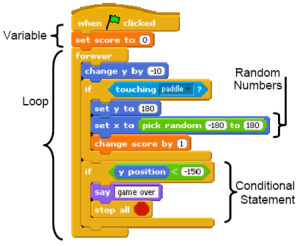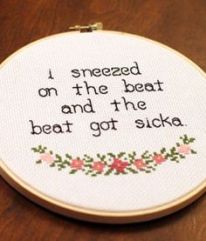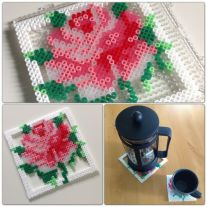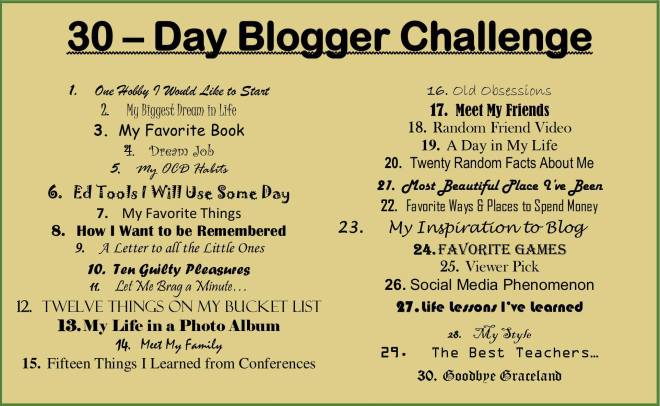Visual Programming for the Classroom & Home
It was my first STEM Camp experience, and I would be teaching. Simply put, the conversation between my professor and I went as so: “Scratch or Alice?” “…Scratch or Alice?” “Yeah, Scratch or Alice?” “Well, how about Alice?” “Ok, Alice it is.” I had no idea what I was getting myself into that first Summer and was racing two days before the camp started to create my session’s curriculum. I can certainly tell you that I didn’t make that mistake again. Both Alice and Scratch have their own benefits and hopefully for others going into the STEM experience you have far more insight, but for those who don’t, let’s talk about some options.

The basic layout of a visual program from Scratch.
You don’t need to be a STEM Educator to utilize programming within your courses. Visual programming allows students to learn main concepts without excessive time spent on simple mistype errors, the block-like coding makes using these platforms much easier and quicker to pick up on. In some of my other blogs you’ll read about how programming platforms like Scratch can be used for alternative
creative-writing lesson plans and in many other ways. Exposing children to programming, also known as
coding, is a highly important factor in ensuring that they gain the logical and computational thinking skills associated within the field of programming. I have worked on several projects throughout the years and I would have to say that Alice and Scratch are the primary two platforms educators use but we will discuss other resources as well for those who prefer the nontraditional platform or who are parents looking to enrich their child’s education.
BOTLOGIC
Target Audience: 3-6 year-olds
Platform(s): Online BotLogic Game
Hour of Code* Support: Yes
About: Students can work through a puzzle game by programming a robot through mazes that increase in complexity as they continue. BotLogic strengthens logic and spatial reasoning skills while building programming concepts as well. BotLogic also allows for head-to-head student competitions. The programming is more about sequential steps and logic, thus lacking in creative freedom.
Best For: Elementary Teachers – BotLogic is the simplest and most straightforward to use without necessary planning. Its simplicity makes it easily understandable for small children and also allows teachers to implement it within curriculum without necessary planning.
SCRATCH JR.
Target Audience: 5-7 year-olds
Platform(s): Scratch Jr. App for Apple tablets, Android tablets, & Chromebooks
Hour of Code* Support: No
About: Students can create interactive stories and games in which they can customize their very own characters. The creators of Scratch Jr. have also released a book for educators and parents to use along with the resources they have online like planned activities, curriculum, assessments, and learning guides.
Best For: Elementary Teachers & Parents – This is a great free application that was birthed from the original Scratch interface. While Scratch can be used, Scratch Jr. had specific altercations made to it to fit a younger child’s cognitive level. There are also resources that the group offers that can make planning lessons much easier. However, Scratch Jr. has a simplicity that students can pick up on their own, thus I recommend parents download this free app as well for their children.
TYNKER
Target Audience: 7-10 year-olds
Platform(s): Online Tynker Free Play, Tynker App for Apple & Android tablets
Hour of Code* Support: Yes
About: Students can solve puzzles, command robots and drones, build custom games, make web apps, and model science projects. Tynker provides a foundation in programming and computational thinking to prepare children for object-oriented programming down the line by giving transitions from the Tynker language to Python and Java.
Best For: Elementary Schools, Camps, & Parents – Tynker is very similar to Scratch and is built on the premise of being an educational tool. On their website, Tynker has a vast amount of information about their camp and school opportunities in which they provide both free and paid-for versions of curriculum that can include lesson plans, student accounts, automatic grading, and automated report cards. This company also offers resources for families in which you can pay for individual courses, pay for a subscription for all courses (1000+), or simply try out the free offers. Tynker would be best for elementary educators & school districts looking to expand their students’ STEM experiences but lacking in trained personnel who are also willing to pay for the ease of use and implementation.
HOPSCOTCH
Target Audience: 10-14 year-olds
Platform(s): Hopscotch App for Apple tablets
Hour of Code* Support: No
About: Students can create Rube Goldberg machines, generative art, 2-player dueling games, geometric patterns, mini-websites, Minecraft remakes, and mini-games. Students’ creations can be published for others to enjoy as well. There are videos on the app that make learning much easier for the students. The Hopscotch team has also created eight lesson plans that align with Common Core and Next Generation Science & Engineering Standards, and also differentiate based upon grade level.
Best For: Late-Elementary & Middle School Teachers & Parents – Hopscotch has a wide amount of abilities that allows for students to build upon and learn programming skills on their own. This extension makes Hopscotch almost equally impressive in comparison to Scratch. This app would be best for teachers that would like to expose their students to a programming app that they can continue to learn and explore on their own, that is free of cost, and provides lesson plans free of cost as well.
LOOKING GLASS
Target Audience: 10-14 year-olds
Platform(s): Website Location to download for Windows, Mac, Linux computers/laptops
Hour of Code* Support: No
About: Students can create and share 3D animated stories, simple games, & even virtual pets. With Looking Glass students can learn key programming concepts like object-oriented programming, parallel actions, iterations, etc. The Looking Glass community allows students to share their creations, see who likes what they made, and remix (reuse) others’ creations to learn from them. Looking Glass, much like it’s parent-program Alice, has the unique aspect of allowing students to program in a 3D environment which can allow for more detailed interactions between objects. This application is also one of few programming environments shown to increase motivation among girls.
Best For: English Teachers – Looking Glass really pushes for the tech integration possibilities of visual programming. Many users have used Looking Glass to make short stories and poems (check out ilikebrick’s Assurance by William Stafford), as their team pushes for. This program is entirely free but must be downloaded to use. Looking Glass would be best for late-elementary and middle school English teachers that have a little more time to learn the application, create their own lesson plans, and have a limited budget.
SCRATCH
Target Audience: 8-16 year-olds
Platform(s): Website Location to download for Windows, Mac, and some Linux computers/laptops, Online Scratch
Hour of Code* Support: Yes
About: Students can create animations, games, and stories. With Scratch and the Scratch Community, students learn to not only program and reason systematically but to also collaborate with others. Students can also peek into the code of others’ creations and pick up on new skills and tricks.
Best For: Elementary, Middle School, & High School Teachers & Parents – Scratch is one of the few programs that is used by people of many ages, reaching way out of their target audience. With the vast amount of potential within Scratch, the skill level can vary from lesson plan to lesson plan depending on what the teachers wishes for. If a school district as a whole wishes to take on computer science, Scratch would be the only consistent tool that can be used for almost all grades, including helping students transfer from Scratch to Java in Intro to Computer Science.
ALICE
Target Audience: 12-20 year-olds
Platform(s): Website Location to download for Windows, Mac, Linux computers/laptops
Hour of Code* Support: Yes
About: Students can create 3D animations. Alice one of two visual programming languages that even has 3D graphics. With this application students can learn computational thinking, problem solving, and computer programming. Alice was the first visual programming application, starting back in 1995, so the graphics are not always the best for 3D quality. However, there are enough 3D items to create worlds that students can set up objects to interact with each other, something that is only attainable with Alice. Along with its age comes textbooks and resources (like Oracle Academy’s Alice to Java program) that others do not have. If teachers wish to, the Alice community also has workshops over the Summer.
Best For: Middle School & High School Teachers – Alice is best used in introductory computer science courses either at the middle school or high school level. Some may wish to use Alice over Scratch simply due to history, its biggest positive, and that many resources and experts are out there because of age.
Overall, I would have to say that Scratch is my favorite tool for teaching programming. Along with Alice, it provides the largest age range and range based off of ability. It also excites students in the fact that they can create their own sprites, characters and objects, and audio which allows for student customization and expression of self within their projects. It is the only application that is available for download and to run within the browser itself. The collaborative aspect, along with the ability to learn from viewing others’ work makes Scratch one of the only programs that push students to become Lifelong Learners. The Scratch team is the only one to do research on how people use their own application and Harvard has even jumped in on MIT’s work by creating a website for Scratch Educators that includes lesson plans for different grade levels and even subject matters. I would give Scratch a 10/10, saying that this is a program that can grow with your students and children.
* Hour of Code is a one-hour event that usually takes place during the Computer Science Education Week to help demystify computer science. Anybody can host an Hour of Code at their school and this is a great way to get elementary students interested in programming if the schools themselves do not have time to teach it. The event was started by CODE, who have many resources for it on their own website. Some of the above programs have their own resources if you wish to stick solely to one application for consistency.






You must be logged in to post a comment.